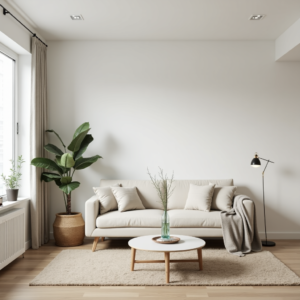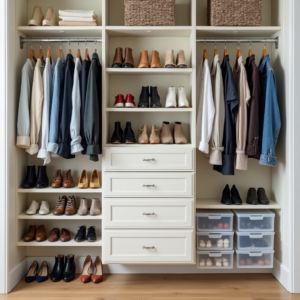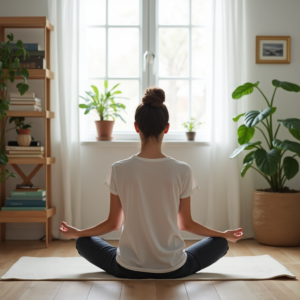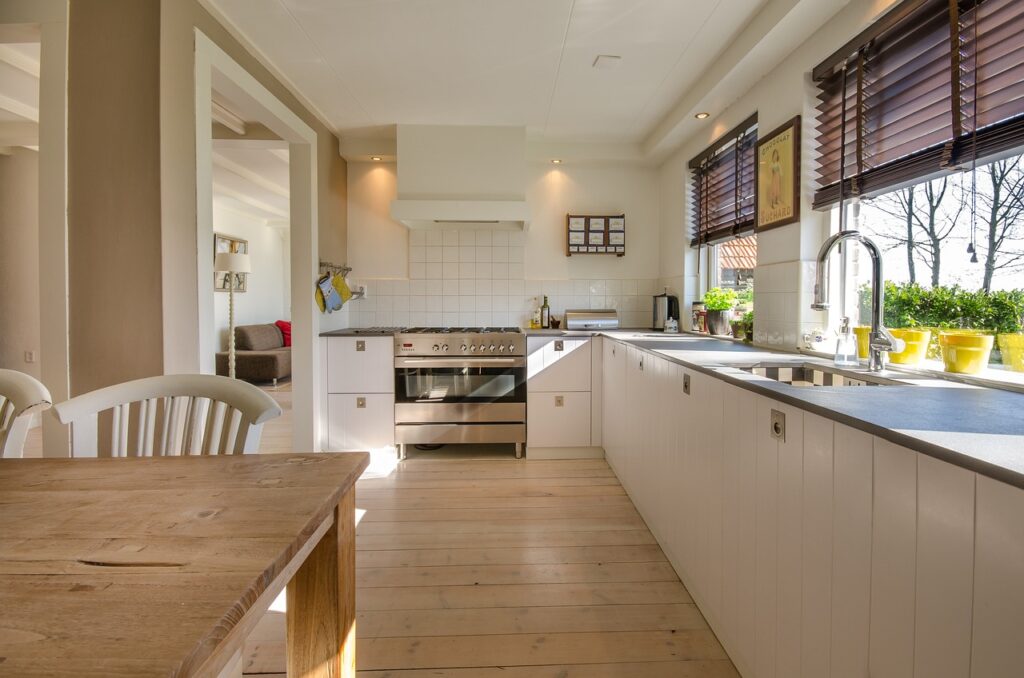Clutter, the persistent challenge in homes everywhere, can quickly overwhelm our living spaces and our lives. The question that plagues many homeowners is: how do we stop accumulating junk? This comprehensive guide delves into the reasons behind clutter build-up, provides insights on recognizing clutter, and outlines practical steps to prevent clutter from taking over your space. Even if it seems like a large project, this bit of knowledge will even help you to decide if using a professional junk removal service is right for you.
The first step in preventing clutter is understanding why we accumulate it. Often, it’s a result of emotional attachment, procrastination, or simply not knowing where to start with organization. Once we understand these reasons, we can start to recognize when we’re falling into these patterns and take steps to break them.
Table of Contents
- Understanding Clutter: The Root of the Problem
- Recognizing Clutter: The First Step to Freedom
- Strategies to Prevent Clutter Accumulation
- Avoid Shopping Without a List
- Cultivate an Attitude of Gratitude
- Limit Exposure to Temptation
- Practice Waiting Before Buying
- Buy for Your Current Lifestyle
- Remember That Sales Don’t Always Mean Savings
- Assign a Home for Every Item
- Maintain Regular Decluttering Sessions
- Reduce Your Desires for More
- Change Your Habits
- Set Firm Boundaries for Stuff
- Believe in a Clutter-Free Future
- Implementing a Clutter-Free Lifestyle
- The Benefits of a Clutter-Free Home
- Conclusion
- FAQ
Understanding Clutter: The Root of the Problem
 Before we can effectively combat clutter, it’s crucial to understand what clutter is and why it accumulates. Clutter is essentially any item you don’t need, want, or use that’s taking up space in your home. It often finds its way into places it doesn’t belong, causing stress and disorder.
Before we can effectively combat clutter, it’s crucial to understand what clutter is and why it accumulates. Clutter is essentially any item you don’t need, want, or use that’s taking up space in your home. It often finds its way into places it doesn’t belong, causing stress and disorder.
Clutter often creeps into our homes through various means:
- Gifts that no longer serve a purpose: Presents that were once adored but are now forgotten.
- Sentimental items: Inherited or sentimental items that you don’t want to use or discard.
- Abandoned hobbies: Craft supplies, sports equipment, books, and other remnants of past hobbies.
- Bargain purchases: Items bought on sale or in bulk that you don’t need or use.
- Seasonal changes: Items needed in one season but not the next, such as clothing, decorations, etc.
Understanding these sources can help us recognize and address the root of our clutter problem.
Recognizing Clutter: The First Step to Freedom
Being able to identify clutter is an essential skill in maintaining an orderly home. Pay attention to items that aren’t being used, don’t have a designated place, or don’t bring joy or usefulness to your life. These items are likely contributing to your clutter problem.
Ask yourself these questions when assessing potential clutter:
- Have I used this item in the past year?
- Does this item serve a specific purpose in my life?
- Would I buy this item again if I didn’t already own it?
- Am I keeping this out of obligation or guilt?
If you answer “no” to most of these questions, the item is likely clutter and can be removed from your space.
Strategies to Prevent Clutter Accumulation
Now that we’ve identified what clutter is and where it comes from, let’s explore practical strategies to prevent it from accumulating.
Avoid Shopping Without a List
Shopping without a list can lead to unnecessary purchases that turn into clutter. Before heading to the store, make a list of the items you need and stick to it. This will help you stay focused and avoid impulse purchases that contribute to clutter.
Additionally, consider implementing a waiting period before buying non-essential items. Give yourself time to evaluate whether you truly need the item or if it’s just a momentary desire. By being intentional with your shopping habits, you can reduce unnecessary purchases and maintain a clutter-free lifestyle.
Cultivate an Attitude of Gratitude
 Cultivating an attitude of gratitude is essential for reducing clutter and maintaining an organized home. By being grateful for the things we already have, we develop a mindset of contentment, which reduces the desire for more possessions.
Cultivating an attitude of gratitude is essential for reducing clutter and maintaining an organized home. By being grateful for the things we already have, we develop a mindset of contentment, which reduces the desire for more possessions.
This, in turn, helps to minimize the accumulation of clutter. Additionally, gratitude encourages us to appreciate and take care of the items we already own, leading to better organization and a clutter-free environment.
Limit Exposure to Temptation
Limiting exposure to temptation is an essential step in creating a clutter-free environment. By reducing the number of distractions and unnecessary items in our surroundings, we can focus on what truly matters and maintain a sense of order and calm.
One effective way to achieve this is by unsubscribing from marketing emails and catalogs that tempt you to make unnecessary purchases. Additionally, avoid browsing online stores or visiting malls without a specific purpose or shopping list.
Practice Waiting Before Buying
One effective strategy to curb impulse buying and prevent clutter in your home is to practice waiting before making a purchase. Instead of immediately buying something on impulse, take some time to think about whether you truly need it and if it will add value to your life.
Implement a “30-day rule” for non-essential purchases. If you see something you want, wait 30 days before buying it. Often, you’ll find that the urge to purchase has passed, saving you money and preventing potential clutter.
Buy for Your Current Lifestyle
When considering purchases, it’s important to think about how they will fit into your current lifestyle to avoid unnecessary clutter. This can prevent the accumulation of items that you “might use someday” but end up becoming clutter.
The key to minimizing clutter in your home is to only buy what you need, and what will serve a purpose or add value to your life. This not only helps with organization but also reduces the amount of maintenance needed for your possessions.
Remember That Sales Don’t Always Mean Savings
While it can be tempting to take advantage of every sale that comes your way, it’s crucial to remember that sales do not always equate to saving money. Often, these discounted items end up unused and forgotten in the drawers of our homes, contributing to clutter rather than providing value.
Before making a purchase during a sale, ask yourself if you would buy the item at full price. If the answer is no, it’s likely not something you truly need or want.
Assign a Home for Every Item
Assigning a home for every item is the cornerstone of achieving a clutter-free environment and gaining control over clutter. This approach to organizing clutter not only aids in keeping your space tidy but also helps you easily locate items when needed.
Create designated spaces for different categories of items. Use labels, bins, and organizers to keep everything in its place. When everything has a home, it’s easier to put things away and maintain a clutter-free space.
Maintain Regular Decluttering Sessions
Regular decluttering can help keep your home clutter-free. Schedule time for decluttering every week or month, depending on your needs. During these sessions, go through your belongings and decide what to keep, donate, or discard.
One effective method is the “one in, one out” rule. For every new item you bring into your home, remove one item. This helps maintain balance and prevents the accumulation of clutter over time.
Reduce Your Desires for More
Reducing the desire for more stuff is an important step towards minimizing clutter in your home, particularly during the holidays when the temptation to buy or accumulate more is high. Instead of opening doors to more possessions, consider the maintenance involved with each item you add to your collection.
Practice mindfulness and contentment with what you already have. Focus on experiences rather than material possessions. This shift in mindset can help you appreciate what you already have, reducing clutter while freeing up your time and mental energy.
Change Your Habits
Changing your habits is an essential aspect of clutter-free living. This process involves identifying habits that contribute to the influx of unnecessary items, such as impulsive shopping or hoarding sentimental items.
Start by creating new habits that support a clutter-free lifestyle. For example, implement a “one-minute rule” where you immediately put away any item that takes less than a minute to store. This prevents small items from accumulating and becoming clutter.
Set Firm Boundaries for Stuff
Setting firm boundaries for stuff is a crucial step in creating a clutter-free home. This principle involves establishing clear rules on how items are acquired, used, stored, and discarded. Having a system in place not only aids in organization but also ensures that your living space doesn’t become overwhelmed with items you don’t need or use.
An effective strategy can be the “one in, two out” rule, where for every new item you bring in, you get rid of two. This conscious decision-making can drastically reduce clutter and provide you with more storage space, thereby leading to a more organized, manageable home.
Believe in a Clutter-Free Future
Believing in the possibility of a clutter-free future is more than just a hopeful thought—it’s a lifestyle choice that’s completely achievable. It’s about eliminating clutter, adopting clutter organization tips, and redesigning our living spaces to support this vision.
Visualize your ideal clutter-free home and work towards that goal. Remember that maintaining a clutter-free space is completely achievable, and you deserve to live in a home that brings you peace and joy.
Implementing a Clutter-Free Lifestyle
 Implementing these strategies may seem challenging at first, but with consistency and patience, they will become second nature. Start small by focusing on one area of your home or one strategy at a time. As you see progress, you’ll be motivated to continue your journey towards a clutter-free lifestyle.
Implementing these strategies may seem challenging at first, but with consistency and patience, they will become second nature. Start small by focusing on one area of your home or one strategy at a time. As you see progress, you’ll be motivated to continue your journey towards a clutter-free lifestyle.
Remember that decluttering is an ongoing process, not a one-time event. Be patient with yourself and celebrate small victories along the way. Each item you decide not to buy or choose to remove from your home is a step towards a more organized and peaceful living space.
The Benefits of a Clutter-Free Home
Maintaining a clutter-free home offers numerous benefits:
- Reduced stress: A tidy environment promotes a sense of calm and reduces anxiety.
- Increased productivity: When everything has its place, you spend less time searching for items and more time on important tasks.
- Improved focus: A clutter-free space allows for better concentration and mental clarity.
- Enhanced creativity: An organized environment can stimulate creative thinking and problem-solving.
- Better sleep: A tidy bedroom promotes better sleep quality and relaxation.
- Easier cleaning: With less clutter, cleaning becomes quicker and more efficient.
- Financial savings: By buying less and being more intentional with purchases, you can save money in the long run.
Conclusion
Preventing clutter accumulation is a continuous process that requires understanding, recognition, and action. It might seem overwhelming at first, but by implementing these strategies and maintaining consistent efforts, you can successfully prevent clutter from taking over your home.
Remember, the goal is not perfection but progress. Every small step you take towards a clutter-free home is a victory. Embrace the journey towards a more organized, peaceful, and joyful living space. With patience, persistence, and the right strategies, you can create and maintain the clutter-free home you’ve always dreamed of.
FAQ
Q: How long does it take to declutter a home?
A: The time it takes to declutter a home varies depending on the size of your space and the amount of clutter. It can take anywhere from a few days to several weeks. The key is to start small and be consistent in your efforts.
Q: What should I do with items I’m unsure about keeping?
A: For items you’re unsure about, try the “box method.” Place these items in a box and store it out of sight for 3-6 months. If you haven’t needed or missed the items during that time, it’s safe to donate or discard them.
Q: How can I prevent sentimental items from becoming clutter?
A: For sentimental items, consider keeping one or two representative pieces instead of everything. You can also take photos of sentimental items and create a digital album, allowing you to keep the memories without the physical clutter.
Q: What’s the best way to organize a small space to prevent clutter?
A: In small spaces, utilize vertical storage solutions like wall-mounted shelves or over-the-door organizers. Use multi-functional furniture with built-in storage, and regularly assess your belongings to ensure you’re only keeping what you need and use.
Q: How can I encourage my family to maintain a clutter-free home?
A: Lead by example and involve your family in the decluttering process. Establish clear organization systems that are easy for everyone to follow. Make it fun by turning tidying into a game or offering rewards for maintaining clutter-free spaces.
Q: Is it okay to keep some clutter, or should I aim for a minimalist lifestyle?
A: The goal is to create a space that works for you, not to achieve a specific aesthetic. It’s okay to keep items that bring you joy or serve a purpose, even if they don’t fit a minimalist ideal. The key is to be intentional about what you keep and to ensure everything has a designated place.
Q: How often should I declutter my home?
A: Regular maintenance is key to preventing clutter buildup. Aim for a quick daily tidy-up, a more thorough weekly organization session, and a comprehensive decluttering every 3-6 months. Adjust this schedule based on your lifestyle and the speed at which clutter accumulates in your home.


